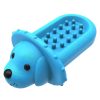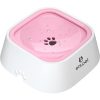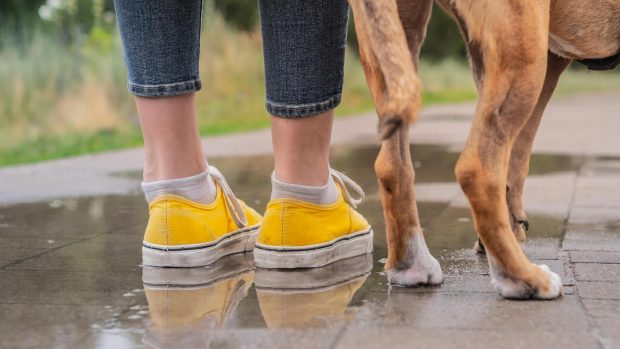All dogs need a safe environment whether they live inside or out. They need protection from hazards around the home, such as open windows, household and garden chemicals and anything poisonous that may grow in the garden. Dogs and puppies especially are by nature inquisitive animals and can quite easily put themselves in danger. A dog also needs a comfortable place to rest and sleep, that’s dry and warm and offers solace if they’re afraid. Learning how to crate train a dog and do it successfully is therefore particularly advantageous.
Benefits of crate training
Not only is the crate useful for preventing your dog chewing and keeping your dog off the sofa and other things that they shouldn’t be climbing on, but it is also a huge aid in toilet training. Dogs do not like to soil their living area. The more space they have access to, the easier it is for them to toilet inside and walk away from it. This is not the case in a crate, but be mindful that very young dogs and older dogs may still need regular or a nighttime toilet break.
Building a positive association with the crate can help a dog stay calm in new or stressful environments, especially if you cover it with a blanket. This aids the natural denning instinct. Crate training can also help set boundaries and, if done correctly, the dogs will grow to love their crate and associate it with all things positive. Crates should never be used as punishment.
Crate training isn’t easy, but it does provide a safe den environment and teaches a puppy or dog to self soothe successfully. Crates are also extremely helpful if a dog recovering from surgery or injury as there is enough space to be comfortable, but not enough to cause more injury with excessive movement. A crate-trained dog will also find any stay-over vet visits much easier to adapt to than if they were not used to being crated.
In the unlikely event of a fire or other emergency, it’s easier to rescue your dog from a crate than if he is free roaming and panicking around the house. Crates are also useful for separating dogs at night or when you go out, particularly if you have a female in season or your dogs just can’t be trusted together. Having a crate specially fitted or secured in the boot of your car is also the safest form of travel for them.
How to crate train
1 Place the crate in a room with the door open and no distractions on the floor, put your dog’s bed in there, their favourite toy, plus something that smells of you, such as an old T-shirt or slipper to make it more appealing. You can also put some crate training aids (like this one on Amazon) in there, too.
2 Let your dog investigate at their leisure and on their own terms initially. If he goes inside the crate, affirm by saying “yes” and give a high value reward, such as cocktail sausage or cheese. It’s important that you do not shut them in at this stage.
3 Keep the door fixed open and add more items into the crate, such as lick mats (like these on Amazon), Kongs, and other toys. You can even start to feed them their meals there. Still allow them to enter and exit freely at this stage.
4 Once your dog is entering and exiting the crate and settling, gently close the door but do not lock it. Repeat this for a few days – it may be worth adding something that keeps your dog busy for longer, such as one of the longest lasting dog chews. Cover the crate with a thick blanket – it’s okay to cover the front, too, providing there is adequate ventilation.
5 When your dog is happy, you can start locking the door and increasing the period of time that the door is locked while you are in the room and then moving out of the room. Make sure they have access to water – you can get water bowls that attach to the crate (like this one on Amazon), which do not knock over and wet their bedding. These are good for metal crates, but if you have a fabric crate, you can use a non-spill water bowls (like this one on Amazon).
6 When you start to leave your dogs for periods of time or when you leave the house, it’s a good idea to leave the TV or radio on.

Crate Training Aid at amazon.co.uk
This aid attaches to the side of the crate and you can spread dog-safe peanut butter on it to keep your dog busy and reduce anxiety.

Hook On Dog Bowl at amazon.co.uk
Available in three sizes, this stainless steel dog bowl is dishwasher safe.
Crate training tips
- Make the crate cosy and comfortable.
- Feed meals and treats in the crate.
- Stay beside the crate or in the same room for short periods of time before getting up and walking away.
- Be prepared for it to take several weeks. You can use cuddly dog toys with a “heartbeat” (like these on Amazon) and a pheromone spray (like this one on Amazon) on their bedding to aid settling and relaxation.
- Make sure that you give the dog plenty of exercise and enrichment, so they are ready to rest when introducing the crate.
- Never use the crate as punishment.
- Leave the TV or radio on for them so it’s not just scary silence and cover their crate with a blanket.
- Add old clothing or a slipper that smells of you.

All For Paws Little Buddy Heartbeat Toys at amazon.co.uk
This toy recreates intimacy with physical warmth, which eases crying, loneliness and separation anxiety in pets. Also has a beating heart for anxiety relief.
Where to put the dog crate
The best location for your dog’s crate depends on your house space and set up. You may wish to be able to carry this upstairs when you first bring a puppy home so that they can sleep in your bedroom without being right next to you. This way they can smell and hear you and should be able to self soothe, especially with an item of your clothing in there with them. Being near you at night is also helpful you if the puppy or older dog needs the toilet in the middle of the night.
Many dogs are very happy in their crate downstairs in either a separate room or family area. In this case, just make sure that your dog is not in direct sunlight or pushed up against a radiator.
How to choose a dog crate
The best dog crate for your setup will depend on what you use the dog crate for, whether it’s for travelling or as your dog’s main sleeping and safe place. Soft dog crates are easier to move around and set up in different places as they are lightweight. However, they are also easier to break out of if a dog is not used to a crate and can be chewed through and torn quite easily, especially the netted mesh part at the front opening.
If you are using a dog crate in a car, a good sturdy plastic or wire metal one is better as they’re more stable and prevent other items in the car squashing against your dog.
Size is the most important thing when it comes to choosing a crate. A crate must be big enough for a dog to stand up in, turn around and lie down comfortably with enough space for bedding. However, avoid buying a crate that’s too large – you may think you are being kind but your dog can easily toilet in the corner of a large crate. It’s likely that you’ll need to upsize to a larger crate once your puppy has grown.
You might also like:

Best dog crates: a safe haven for the home and the car

Have dog, will travel – the best soft crates to keep your pooch safe and happy while on the move

How to stop a puppy crying so that everyone gets a good night’s sleep

Down Fido down! How to keep dogs off the couch

Subscribe to Horse & Hound magazine today – and enjoy unlimited website access all year round
Horse & Hound magazine, out every Thursday, is packed with all the latest news and reports, as well as interviews, specials, nostalgia, vet and training advice. Find how you can enjoy the magazine delivered to your door every week, plus options to upgrade your subscription to access our online service that brings you breaking news and reports as well as other benefits.







